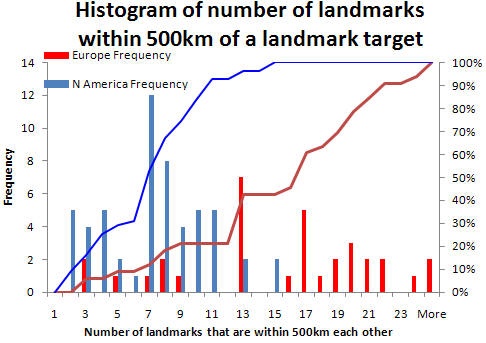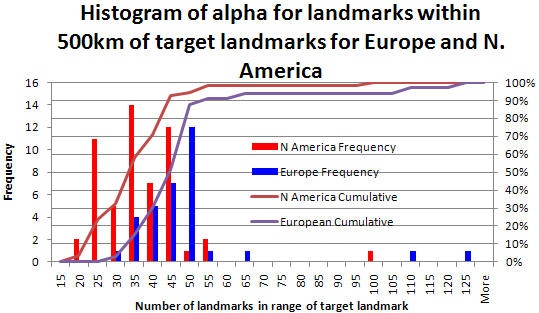...
For Europe and North America the distribution of landmarks within 500km of each other is seen below. the data comes from a spreadsheet . it is seen that n. America has more landmarks close together than Europe. This maybe since the N. American landmarks are clustered on the East Coast, West cost and around Chicago.
We also looked at the value of alpha to use in order to get the correct distance between the landmark and target target based on the measured minimum RTT. Histograms of these values is plotted below or N. America and Europe.
It is seen the the median alpha for N.america is ~ 0.35 while for Europe it is ~0.45.
Based on the above data, I we plotted a graph to see the relationship between distance and error distance in a graphical manner. The graph is shown below:
(as predicted by the Apollonius method) for each major region where we have a majority of the landmarks. The spreadsheet of the detailed results is available.
It is seen that as expected that the error is generally smaller if the landmarks are closer together. The same Same result shown in the form of bar graph below: is:
From the graph, we see that in Europe where the number of landmarks is high and there is less average distance between landmarks, then we get good results in terms of error distance. The trend looks fine when we move to next regions where average geographical distance is comparatively higher (error distance has also increased for these regions) but we see a different trend for North America where average geographical distance between landmarks is higher than other regions like East Asia and South Asia but yet, the Error distance is quite lower. In fact this result depicts that even though landmarks are geographically dispersed and not closely located in this region, the connectivity in this region is so better that we get quite reasonable results even then.
...


